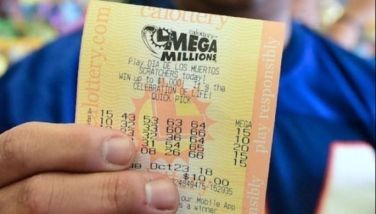La vie boheme: A Malate state of mind
September 26, 2003 | 12:00am
 I’ve always wondered what it would be like to live in Malate. Over the years, I’ve been a pseudo-citizen of this fascinating district. I’ve noshed at its restaurants and been sloshed at its bars, lounged in its cafes and snoozed in its hotels. There’s always been something about the character and vibe of this place that keeps drawing me into its intricate web.
I’ve always wondered what it would be like to live in Malate. Over the years, I’ve been a pseudo-citizen of this fascinating district. I’ve noshed at its restaurants and been sloshed at its bars, lounged in its cafes and snoozed in its hotels. There’s always been something about the character and vibe of this place that keeps drawing me into its intricate web.
I’ve found many cities around the world who cultivate funky neighborhoods like Malate. Mexico City has La Condesa, a hip new neighborhood that attracts the city’s young artists, and a slew of trendy bars and restaurants. Buenos Aires has La Boca where many of its warehouses have been converted into artist’s lofts. Barcelona has El Born where you find chic sandwich shops next to sneaker stores. Berlin has the Mitte district filled with vintage clothing stores and slick furniture galleries. Tokyo Las Ebisu, where you find funky Jap-Italian/Jap-French cafes and avant-garde designer labels. I’ve discovered that many of these neighborhoods have parallel histories. In some instances, they were old industrial spaces that have become defunct, due to a shift from manufacturing to service-oriented economies. In other cases, these areas were formerly occupied by the city’s elite that has since moved on to quieter suburban areas. A great many cities have developed this pattern of informal urban regeneration, usually led by artist communities in search of affordable but interesting living quarters.
Over the years, the city and its population grew. By the 1930s apartments were a new way of living and some fantastic buildings were built in the area. Both economics and technology influenced landowners to make better use of their land by building higher and renting out more units. Both Filipino and foreign architects designed such period gems as the international style Syquia and Carmen Apartments, the Art Deco Michelle, Angela and Rosaria Apartments and many more that are no longer around. Much of Malate was destroyed when the Americans bombed Manila in World War II. Some of these buildings were rebuilt, but only a few remain today. The development of Makati in the late 1950s was the killer blow to Old Manila. Businesses moved from Escolta to Makati’s expansive environs and shiny new office buildings, while Malate’s elite moved to the leafy gated communities of San Lorenzo Village, Bel-Air (back when it really was still good air) and Forbes Park. Thus, Malate slid into a period of anonymity and vagrancy. And this is when Malate’s renaissance begins.
I’d really love to pack up my bags and take root in Malate. I’ve already taken the first step by leaving my Makati subdivision home and moving to an apartment, although it’s still in Makati. My current excuse is that my job requires me to be close to the CBD. But I’ve promised myself that someday soon I’ll make the move. I can hardly wait.
BrandSpace Articles
<
>

















